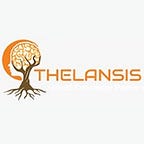T-Cell Lymphoma — Market Outlook, Epidemiology, Competitive Landscape, and Market Forecast Report — 2023 To 2033
Lymphoma denotes a collective term encompassing over 80 diverse diseases originating from the malignancy of lymphocytes, specifically T cells. T-cell lymphomas, a rare subset of non-Hodgkin lymphomas (NHL), exhibit a spectrum of indolent to aggressive manifestations. The etiology of most T-cell lymphomas remains elusive, with suggested associations involving genetic dysregulation (cancer-testis genes and B lymphoid tyrosine kinase) and aberrant signaling pathways (Jak-3/STAT and NOTCH1). Chronic cutaneous inflammation, such as chronic urticaria and chemical exposure, has been linked to the development of cutaneous T-cell lymphoma (CTCL). Clinical manifestations of T-cell lymphoma encompass chest pain, coughing, difficulty breathing, fever, night sweats, abdominal pain or swelling, persistent fatigue, swollen lymph nodes, and unintentional weight loss. Infectious factors, including bacterial and viral associations (such as retrovirus-like Human T-cell leukemia virus 1 and 2, HIV, EBV, CMV, HHV8), have been considered in the etiology of both CTCL and peripheral T-cell lymphomas (PTCL). Specific associations include HTLV1 with adult T-cell lymphoma/leukemia and EBV with Natural-killer cell/T-cell lymphoma and angioimmunoblastic T-cell lymphoma. Enteropathy-associated T-cell lymphoma (ETAL) is linked to celiac disease, while T-cell activating autoimmune disease and a family history of myeloma increase T-cell lymphoma risk. Differential diagnoses for CTCL include erythroderma resembling atopic/contact dermatitis, drug eruptions, erythrodermic psoriasis, lichen planus, cutaneous B-cell lymphoma, and subcutaneous panniculitis T-cell lymphoma. PTCL differentials encompass other T-cell lymphoma subtypes, B-cell lymphoma, granulomatous histiocytosis, and paracortical hyperplasia. Two primary types of T-cell lymphomas are T-lymphoblastic lymphoma/leukemia and peripheral T-cell lymphomas, with additional subtypes such as PTCL, NOS, anaplastic large cell lymphoma, angioimmunoblastic T-cell lymphoma, T-cell lymphomas of the GI tract, and cutaneous T-cell lymphomas. Patients with T-cell lymphomas face heightened infection risks due to compromised immune systems, with acute T-cell lymphoma/leukemia involving hypercalcemia and lytic bone lesions. Bony destruction is also observed in Extranodal Nk/T-cell lymphoma, nasal type, with visceral involvement in various organs. Large cell transformation signifies a more aggressive form in CTCL. Precursor T-cell lymphoblastic lymphoma may lead to superior vena cava syndrome, tracheal obstruction, pleural/pericardial effusion, and ulceration of lesions in mycosis fungoides (MF). The Lugano classification serves as a staging system for all lymphomas, categorizing them as limited or advanced. In the United States, T-cell lymphomas constitute less than 15% of non-Hodgkin lymphomas, and most subtypes are associated with poorer outcomes than B-cell lymphomas.
Thelansis’s “T-Cell Lymphoma Market Outlook, Epidemiology, Competitive Landscape, and Market Forecast Report — 2023 To 2033” covers disease overview, epidemiology, drug utilization, prescription share analysis, competitive landscape, clinical practice, regulatory landscape, patient share, market uptake, market forecast, and key market insights under the potential T-Cell Lymphoma treatment modalities options for eight major markets (USA, Germany, France, Italy, Spain, UK, Japan, and China).
KOLs insights of T-Cell Lymphoma across 8 MM market from the centre of Excellence/ Public/ Private hospitals participated in the study. Insights around current treatment landscape, epidemiology, clinical characteristics, future treatment paradigm, and Unmet needs.
T-Cell Lymphoma Market Forecast Patient Based Forecast Model (MS. Excel Based Automated Dashboard), which Data Inputs with sourcing, Market Event, and Product Event, Country specific Forecast Model, Market uptake and patient share uptake, Attribute Analysis, Analog Analysis, Disease burden, and pricing scenario, Summary, and Insights.
Thelansis Competitive Intelligence (CI) practice has been established based on a deep understanding of the pharma/biotech business environment to provide an optimized support system to all levels of the decision-making process. It enables business leaders in forward-thinking and proactive decision-making. Thelansis supports scientific and commercial teams in seamless CI support by creating an AI/ ML-based technology-driven platform that manages the data flow from primary and secondary sources.
